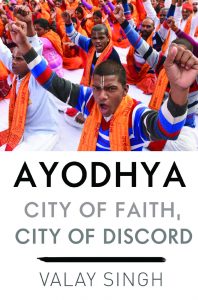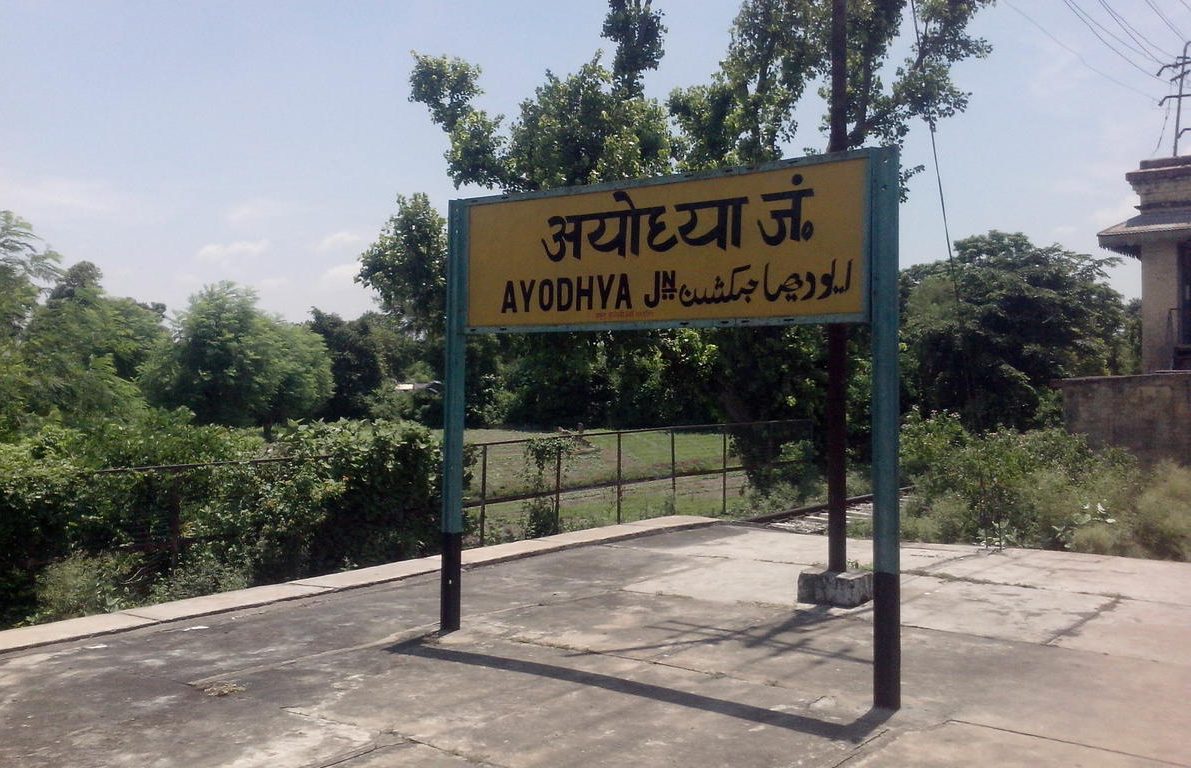Ascending anachronism means pushing an event or occurrence to a time in the past. This is often accompanied by the idealization of that time as a period when things were perfect. The more the event is pushed back into the past the more legitimizing power it acquires. Muslims hark back to the time of the Prophet, Christians to the time of Jesus, Buddhists remember Buddha, Jains the time of Mahavir, and Hindus today are told that in the time of king-god Ram, Ayodhya was the best capital in the world where all lived happily and peacefully. The example of Ram Rajya, or Ram’s rule, was often cited by Mahatma Gandhi. It is interesting that Gandhi could use Ram Rajya to galvanize all communities and not just Hindus, which once again reflects the plurality of the Ramayana tradition. Ram was called Imam-e-Hind by Iqbal, the famous Urdu poet who later became the national poet of Pakistan. It is impossible to establish when Ram Rajya prevailed, if it indeed did. Those who believe in the historicity of Ram Rajya place its birth around 5114 BCE on the basis of astro-archaeology, although using planetary positions to establish historicity is yet to be recognized as a reliable method.
The material evidence of Ram Rajya in the Ayodhya of today is negligible, as we have seen in the first chapter. Perhaps the Ayodhya of Ram was a different place that now lies submerged under the Sarayu, as suggested to me by K. N. Govindacharya, a former ideologue of the Rashtriya Swayamsevak Sangh (RSS). The paucity of evidence of the kingly Ram has been replaced by faith in the godly Ram, and thus, the Ayodhya of today encapsulates both Ram-Rajya and Ram worship.
We cannot scientifically establish the historicity of Ram Rajya, but we shall attempt the same for Ram worship in Ayodhya.
In today’s Ayodhya, the legends around Ram stretch time to limits that are impossible to wrap one’s head around. Visitors, educated and unlettered, rich and poor, are told by local guides, ‘It has been nine lakh fifty-six thousand years since Ram left Ayodhya. Therefore, obviously, nothing remains from that time. The temples that you see today were built by King Vikramaditya of Ujjain. He brought a Kamdhenu (wish-fulfilling) cow from Banaras, made the cow circumambulate Ayodhya and wherever the cow dropped dung, he excavated those places and at these places he built the temples.’ A slightly different version of this story is what Mahant Satyendra Das, the head priest of the Ram Janmabhoomi temple, tells me. According to him, it was not dung but milk from the cow’s udders that marked the ‘holy’ spots. Wherever the cow spilled milk, Vikramaditya built a temple. Nar Singh Pandey, a local guide, continues, ‘Hanumangarhi, Ram Janmabhoomi, Kanak Bhavan, Sita Rasoi and Dashrath Mahal were built by Vikramaditya. Later on, many temples were built by people. In Ayodhya, every year a couple of new temples come up.’
Ram is said to have left Ayodhya for heaven nine lakh fifty-six thousand years ago, taking his subjects who loved him dearly along with him. Thus, Ayodhya became desolate and remained so until Vikramaditya — whose own historicity remains unestablished — found it and resettled it. Pro-temple historian Thakur Prasad Verma writes about this legend in his book, Ayodhya ka Itihas evam Purattatva, and also in the ASI’s magazine, Purattatva. ‘Who was this Vikramaditya? Nothing can be said with certitude about him. According to tradition, Vikramaditya was a king of Ujjain in the Gardhabhilla dynasty and who instituted the Hindu calendar known as Vikram Samvat in 57 BCE. There is no evidence of him ever visiting Ayodhya.’
Verma also explores the possibility of Chandragupta II being the Vikramaditya of Nar Singh Pandey’s tour but concludes that the legend ‘can neither be rejected nor verified’. Be that as it may, the guides of Ayodhya believe it and so do the priests.
At the Vishva Hindu Parishad (VHP)-run stone-cutting workshop which also houses a mini gallery exhibiting the VHP-approved version of Ayodhya’s history, Nar Singh Pandey continues, ‘Babur destroyed the temple in 1526 with the help of cannons because the temple was so strong that his army couldn’t destroy it without them. The mosque that he then built over the ruins used the blood of 176,000 Hindus to prepare the mud mortar. One lakh seventy-six thousand,’ he emphasizes the number of Hindus who presumably died protecting the Ram temple. Information about the exact number of martyrs is doled out with astonishing confidence and regularity by many local guides. Pandey’s claims made at the VHP workshop seem even more astounding given that historians and archaeologists have been looking for decades for signs of the grand temple and have come up with nothing but controversial finds. On the other hand, there are examples of destroyed temples at other sites in India, including Bijai Mandal and Ashapuri near Bhopal, where the broken and scattered remains of temples are overwhelmingly visible. They are undeniable, eliciting the attention of even the most uninterested and unsympathetic observer. No such remains are to be found in Ayodhya.
‘Where is all that rubble?’ John Stratton Hawley, a professor of religion at Barnard College, New York, had asked when he visited Ayodhya in January 1993, just a month after the demolition of the Babri Masjid. He was told that the ‘vast Hindu crowd took it away…as souvenirs and objects of veneration’. This is partially correct, but it doesn’t explain the virtual absence of huge building blocks of stone or any other remnants of the great mosque of Babur, said to have been constructed from the ruins of an equally great—if not greater—Hindu temple. As Hawley noted, the answer is quite simple: ‘The mosque was not actually constructed of such stones. It predated the fine mosques of Mathura and Banaras and used a more modest medium: large bricks of the Jaunpuri style.’ Ayodhya may not have any grand ruins of the Babri Masjid or any other majestic structure, but it does have other interesting layers of religious history.

Excerpted with permission from Ayodhya: City of Faith, City of Discord by Valay Singh, Aleph Book Company
Price: ₹480


Comments are closed.